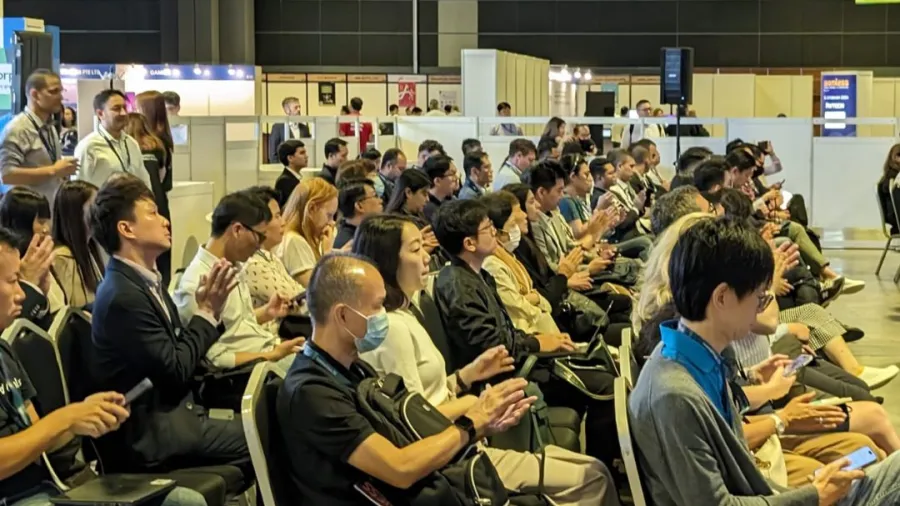
Key figures at Seamless Asia fan e-commerce excitement over AI
Traditional marketing squeezes its way into discussions on vibrant e-commerce in Asia.
Aritificial intelligence (AI) was undoubtedly one of the most explored innovative solutions at this year’s Seamless Asia, which drew over 2,900 participants in Singapore.
In every theme and discussion with industry leaders in e-commerce, fintech, payments, and banking, AI kept cropping as among the cutting-edge technologies being integrated into various industries.
The boundless nature of AI has indeed opened doors to addressing the ever-changing demands from this tireless industry.
But beyond that also comes the maximisation of social media and other untapped technologies, bridging the gap and risks caused by the digitalisation of most markets.
E-commerce in Asia
At a panel discussion on the future of e-commerce in Asia, Nirgunan Tiruchelvam, Head of Consumer and Internet at Aletheia Capita, made it clear that “AI will not replace [the] human element.”
He said AI is but a tool and not an abandonment of genuine intellect, driving the growth of industries across the globe. “AI will not determine people's choice to a far greater degree,” Tiruchelvam said.
Shweta Jhamb, Director of E-commerce & Digital Marketing at Haleon, said AI can also be used to “bring about focus in digital marketing.”
Jhamb added that social media maintains a great potential to boost e-commerce sales, so it must be developed over time. One such effective strategy she recommended is influencer marketing. Whilst not a novel concept, Jhamb suggested that brands should consider embracing this strategy more into the future.
Social media provides a diverse array of platforms for e-commerce with various applications that can function as an online marketplace. Jhamb said that by utilising these platforms, merchants can keep up with the demands of “quick commerce.”
“Merchants need to be attuned to the needs of social media,” she said. “[Merchants] need to know how to make more formats and cater to the needs of shoppers for a holistic shopping experience.”
These recommendations emerge against the overwhelming backdrop of the industry in Asia, which Jhamb describes as “the place to be in e-commerce.”
Sharing this outlook, Tiruchelvam added: “Southeast Asia will remain a vibrant market for e-commerce.”
Traditional marketing
Suggesting a different angle, Anurag Porwal, Head of Insights & Analytics for APAC at Kimberly-Clark, said in his keynote speech that adhering to traditional means can also be an effective strategy for brand promotion.
With e-commerce’s increasing reliance on AI and machine learning (ML), what Porwal believes is that some brands may want to take “a step back” and look at “loyalty and trust” that comes from “brand love.” This marketing tactic focuses on strengthening consumer relationships.
He cited a study showing that chemicals like oxytocin, which are linked to a person’s affection towards a loved one, are the same as those associated with a customer’s feelings for a brand.
Porwal said that achieving brand love successfully encompasses three essential elements: trust, advocacy, and loyalty, which ultimately lead to customer satisfaction.
Bridging the gap brought by digital commerce
The rise of e-commerce has inadvertently caused the retail industry to shift downwards as customers are opting more for convenience.
But of late, the situation has reversed and e-commerce brands now have to compete with physical retail stores, as some physical store offerings have now become a luxury.
“Customers still crave that in-store experience, and having that luxury of being able to try on clothes, is a luxury these days, because everything is so fast paced and instant now” May Chin, Head of Product Growth for Zalora said in an interview with Retail Asia.
“So even companies like Sephora, for example, have tried to bridge the online to offline gap with [their] own in-person physical experiences as well, such as with pop up stores in different shopping malls in Singapore, for example. So we've really come full circle, right, like back then traditional retail is trying to go online,” she added.
Addressing the fact that the competition with international e-commerce brands intensifies overtime, Chin said “some level of innovation in terms of style or experience would be needed to keep up with the competition.”
In Zalora, competing in the price war is not an option. Hence, it is imperative for them to find alternatives to gain and retain more customers. “What we can instead compete on is to build a more genuine, non-transactional relationship with our users instead of having a relationship that's extremely price informed and discount informed,” Chin said.
With this strategy, Zalora can foster lasting relationships with their customers. Whilst prices may fluctuate, quality is one thing that can certainly be upheld.
“So how we try to compete in these aspects that I’ve described is to instead put less of a focus on quantity and more on quality,” she said. “And when users shop with us, for example, they do note that there is a quality of promise, and whatever they will [receive] would be upheld to a certain standard of quality that they can expect from us. Aside from that, we also have an extremely attractive and flexible returns policy.”
Emerging technologies
Despite the overwhelming reception of emerging technologies in the e-commerce sector, there are still some technologies with potentials that remain untapped.
In a panel discussion, Warren Woon, Co-founder and CEO of Xctuality, underscored the importance of utilising blockchain in the retail sector to facilitate faster transactions, accommodating the fast-paced retail environment. “Pre-blockchain was a long process of [customer journey],” he said.
In the same panel discussion, Lionel Chok, Co-founder of WORLDX, said that blockchain can also be used to address gaps in the market and identify long term market viability and scalability.
However, the application of blockchain may vary per industry as there is “no one size fits all.” Adding to this, Woon suggested using a data set to build a language model customised to your brand.
“It is not about how new the technology is but how it is being used to address issues or find correct technology solutions,” Woon said.
Retail Asia is the Official Media Partner of Seamless Asia 2024, which took place on 20 - 21 February 2024 in Singapore. The 2025 edition returns on 26 and 27 February at Suntec Convention Centre, Singapore. To get involved, visit www.terrapinn.com/AboutSeamlessAsia2025

















 Advertise
Advertise







